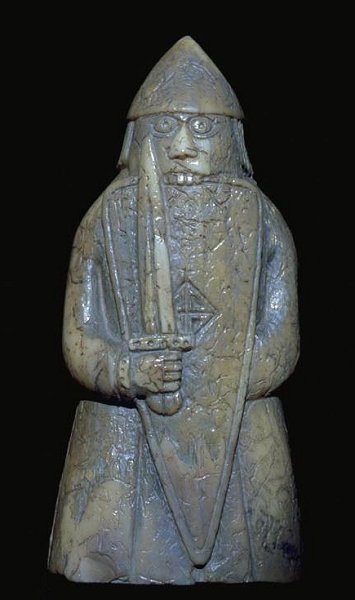|
The 'Lewis Chesspieces', are the largest and finest group of early
chessmen to survive. Discovered in 1831 at Uig Bay on Lewis in the
Outer Hebrides, the hoard is known to have contained 78 walrus ivory
chesspieces.
The
pieces were made in Iceland or Norway in the eraly 12th century.
Each figure has been individually crafted using fine chisels, knives
and files. Some pieces were coloured red, probably using madder,
a widely available vegetable dye. This is one of 12 "Warders"
in the set and is wearing a helmet and a thick padded coat and is
holding a sword and shield. He is biting the shield in the manner
of a Norse ‘berserker’. The warder could be moved in the same way
as the modern rook or castle - any number of spaces forwards, backwards
or to the side.
Walrus
ivory was once much prized by royalty and the Church in northern
Europe. It was carved in a few specialist workshops which thrived
from the mid 10th to the early 13th centuries.

©SCRAN/National Museums Scotland
Front view of a ‘warder’ from the Lewis Chesspieces
|
|